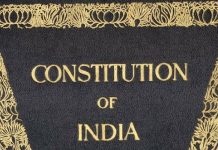This article has been written by Rajasimha Shastry BK pursuing the Diploma in Advanced Contract Drafting, Negotiation and Dispute Resolution from LawSikho. This article has been edited by Smriti Katiyar (Associate, Lawsikho).
Table of Contents
Introduction
Section 9 and Section 17 of the Arbitration and Conciliation Act, 1996 provide interim relief to the parties in arbitration. The necessity for interim measures arose as, on several occasions, circumstances arose where either of the parties engaged in activities that delayed proceedings or prejudiced the rights of other parties or turned the judgment in their favor. An example for this would be selling off the disputed asset. Interim reliefs vary according to prevailing situations and circumstances. Thus, in order to safeguard the rights of the parties, a provision for granting interim relief became a necessity. While both the Sections 9 and 17 of the Act provide for granting of interim reliefs, the circumstances in which they can be availed vary.
Section 9 of the Act states that a party can seek for interim measures or protection from “the Court” before, after or during the proceedings or at any time after making of the arbitral award but before its enforcement. Once the arbitral tribunal has been constituted, a party shall approach the arbitral tribunal unless the court finds that the prevailing circumstances do not render the remedy provided by the arbitral tribunal (under Section 17 of the Act) efficacious. The words “the Court shall not entertain” of S. 9 (3) of the Act makes it clear that the courts shall not grant relief once the arbitral tribunal has been constituted. In the case of Sri Tufan Chatterjee v. Sri Rangan Dhar, the court stated that “shall not entertain” phase meant that “a party that has the power to institute a proceeding under Section 9 at any juncture, since the word used was “entertain ” and not “institute ” as used in Section 3 of the Limitation Act, 1963 (Bar of limitation), the Court is denuded of its power to hear an application on merits unless it is convinced that the remedy under Section 17 is not efficacious.”
The court can grant interim measures under Section 9 only if the measures provided by the arbitral tribunal are not efficacious. On the other hand, Section 17 of the Act states that a party can seek for interim measures or protection from “the Arbitral Tribunal” during the arbitral proceedings or at any time after the making of the arbitral award but before it is enforced. The arbitral tribunal has the same power as that of the court for making orders, for the purpose of, and in relation to, any proceedings before it. Both the sections also provide for the appointment of a guardian for a minor and unsound person for arbitral proceedings.
While it seems that both the courts and tribunals have the same power to grant interim reliefs, the court has more power to grant relief. A plain perusal of Section 9 (3) will reveal that the Court has been given a superior status than the Arbitral Tribunal. While an inefficacious interim relief from the tribunal is a ground to approach the court, there is no provision that provides grounds to approach the arbitral tribunal in case of an inefficacious interim relief by a Court. Prior to the 2015 Amendment Act, interim measures granted under Section 9 were more than the reliefs granted in Section 17. Through the 2015 Amendment Act, more power was granted to the tribunal. The order of a Tribunal was to be deemed as an order of court for all purposes and shall be enforced in the same manner as a Court order. This was done as S. 9 of the Act was the preferred option for the parties even after the Tribunal was constituted. Thus, with time, the authority of arbitral tribunals is increasing.
There are circumstances where there is an overlap between Sections 9 and 17 of the Act. The Delhi High Court held that a pendency of an application under section 17 does not take away the powers of the court to give order for interim relief. The Andhra Pradesh High Court held that remedy under Section 9 of the Act is not barred even if it is already, partly or fully sought under Section 17 of the Act. The court is higher in the hierarchy and has primacy as far as interim reliefs are concerned. From this, it can be said that the parties have two options. But does this mean that a person can directly approach the court under Section 9? Section 9 (3) states that once the tribunal has been set, the court shall not entertain any application made under s. 9 (1) unless the remedy under S. 17 is inefficacious. The court will then first examine the relief granted under S.17, before taking up the case as the tribunal has already been set. This means that the party must approach the tribunal first.
This has been well explained in the case of M Ashraf v. Kasim VK. The court provided three stages. The first stage is before the commencement of arbitral proceedings. In this stage, S. 9 (3) of the Act does not apply. The second is when the arbitral proceedings have begun. At this stage, it is necessary for S. 9 (3) of the act to be satisfied. The third stage is when the arbitral award has been made but is yet to be enforced. It is to be noted that at this stage, the tribunal has ceased to function. Except in cases provided under Section 33 of the Act, the tribunal would have ceased to function, and the unsuccessful party might try to sell off the property in dispute. In such a scenario, the successful party can approach the court and the court cannot reject on the grounds that an efficacious remedy has been granted under S. 17 of the Act. This judgment also serves as an exception to S. 9(3) of the Act.
Standards applicable
Standards applicable to grant interim relief by Courts. There are no standards prescribed to grant interim relief under S. 9 of the Act. The applicability of provisions of CPC remains unsettled. This was not addressed in the 2015 Amendment Act as well. There are two lines of reasoning regarding this. One is the inclusionary approach, and the other is the exclusionary approach. The exclusive approach is that the rigors of CPC cannot be put in place as it defeats the purpose to grant interim under S. 9 of the Act. The other one considers proceedings under S.9 to be akin to Order XXXVIII Rule 5 and Order XXXIX of CPC. Order XXXVIII Rule 5 of CPC pertains to certain reliefs in nature of grant of security, attachment of property or arrest of defendants that are similar to the reliefs under Section 9 (ii) (b) and (c) of the Act. Order XXXIX of CPC provides for temporary injunction akin to the relief under Section 9 (ii) (d) and (e) of the Act.
An example for an exclusionary approach is the case of Tata Capital Financial Services Ltd. v. Unity Infraprojects Ltd. & Ors. In this verdict the Bombay High Court stated that the court will broadly bear in mind the Order XXXVIII Rule 5 and Order XXXIX of CPC. At the same time, it will also have the discretion to give relief depending upon the facts and circumstances of the case to secure the ends of justice and preserve sanctity of arbitral proceedings. An example for an inclusionary approach is the verdict of the division bench of Delhi High Court in Anantji Gas Service v. Indian Oil Corporation. In this case it was held that Section 9 is akin to Order XXXVIII Rule 5 and Order XXXIX of CPC. The requirements of these orders of the CPC were held to be necessary. The requirements are, prima facie case, balance of convenience and irreparable loss in case no protection is offered.
Standards applicable to grant interim relief by Arbitral Tribunals. In the case of Intertoll ICS (Cecons) O&M Company v. NHAI The court held that the arbitral tribunal would have to ascertain whether the petitioner has made out a case as per order XXXVIII Rule 5, prior to granting interim relief. Also, in the case of Yusuf Khan v. Prajita Developers Pvt. Ltd. and Ors, it was held that “tribunals while exercising their power under section 17 and particularly Section 17(1)(ii)(b) of the Act, i.e., the principles laid down in the CPC for the grant of interlocutory remedies must furnish a guide to while determining an application under Section 17 of the Act.”
Enforceability
Enforceability of interim relief under S.9 of the Act. Since the order is given by a court, the interim relief shall be enforced like any other order of the court. This means that all laws applicable in relation to orders passed are applicable on orders under S.9 of the Act as well. Enforceability of interim relief under S.17 of the Act. As discussed earlier, through the 2015 Amendment Act, orders of tribunal were held on par with orders of a court. In the recent case of Alka Chandeshwar v. Shamshul Ishrar Khan, the Supreme Court held that non-compliance of a tribunal’s orders amounted to contempt and would be triable under the Contempt of Courts Act, 1971. From this it can be said that orders under S. 9 and S. 17 of the Act are fully enforceable and are at the same level.
Conclusion
To conclude from the above writing, it can be said that S.9 and S. 17 are not merely a procedural matter. It affects the encouragement being provided to ADR in recent times. Before the 2015 Amendment, as mentioned before, despite the formation of tribunal, parties would go to the court for an interim measure. However, when the tribunal order was placed at par with a court order, parties went to the tribunal for an interim relief. This not only reduced the burden of the court, but also reduced the intervention of the judiciary in arbitral proceedings. However, a contrary opinion to this can be found in the case of M.D., Army Welfare Housing Organisation v. Sumangal Services Pvt. Ltd. This judgment was delivered prior to the 2015 Amendment Act. The court held that an arbitral tribunal is not a court of law and that its orders are not judicial orders. It also held that the tribunal is to be restricted to the four corners of the agreement and pass an order which may be a subject matter of reference. However, it must be noted that the courts have been outmoded and litigative justice has been put to a halt. The need for ADR methods to evolve as an adjunct of the judicial system. There is a severe need to reduce the burden on judiciary and speed up the process of delivering justice. Hence, to bring S.17 orders at par with S.9 is a step in the right direction. Despite the troubles of the judiciary, opinions against bringing tribunal and court at par continue to exist, like the above Army Welfare Housing judgment. It is to be noted that Indian law does not lay any specific qualifications for arbitrators. Perhaps laying off certain qualifications to become an arbitrator could reduce such opinions.
Students of Lawsikho courses regularly produce writing assignments and work on practical exercises as a part of their coursework and develop themselves in real-life practical skills.
LawSikho has created a telegram group for exchanging legal knowledge, referrals, and various opportunities. You can click on this link and join:https://t.me/joinchat/J_0YrBa4IBSHdpuTfQO_sA
Follow us on Instagram and subscribe to our YouTube channel for more amazing legal content.
 Serato DJ Crack 2025Serato DJ PRO Crack
Serato DJ Crack 2025Serato DJ PRO Crack











 Allow notifications
Allow notifications



